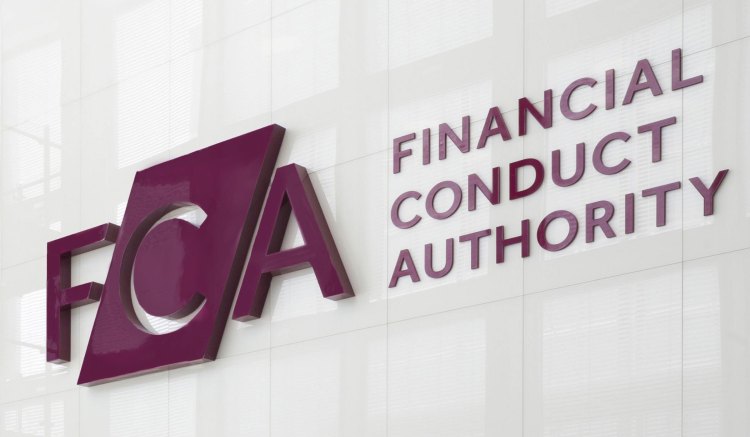Financial regulators are entering an era of increased transparency, and are setting out their expectations in clearer terms than ever before. From the Securities and Exchange Commission (SEC) setting out the decision making process behind its recordkeeping fines to the Financial Conduct Authority (FCA) outlining how its controversial “name and shame” investigatory approach might be implemented, regulators are communicating with increasing clarity.
The FCA’s Market Watch has long provided firms with regular insight into the regulator’s areas of focus and the findings from investigations. For well over a decade it has been a “heartbeat” of key insight into regulation of financial services, covering a range of topic within the FCA’s remit, from Market Abuse surveillance and transaction reporting to how firms can meet new reporting requirements. More recently, the FCA has published a flurry of Market Watch editions – perhaps with a view to meet its new commitment to being a more transparent regulator.
We regularly cover the key takeaways from the FCA’s Market Watch, and have condensed the key insights from some of the most recent editions in this handy guide.
Market Watch 75: Sounding out market sounding
Published on October 31, 2023, Market Watch 75 focused on the balance between tricks and treats in market sounding practices. Market soundings are “interactions between issuers and investors which help determine interest in a transaction before its announcement”, and allow “issuers to gauge investors’ opinions on possible transactions to help set their price, size, and structure”.
Having strong market sounding procedures in place is vital, as the practice poses the potential risk of inside information being used to influence investments.
The FCA shared its concerns around information contained within market soundings. While this information is non-specific, there is the possibility it could still be used to identify relevant securities, and to trade on that information. Market Watch 75 includes guidance that firms are expected:
- To remind those they share market sounding information with that they are prohibited from using the information to trade or attempt to trade relevant instruments
- To ensure they are making and maintaining a record of all the communications with, and all the information given to, recipients of market sounding information
As with a broad range of the FCA’s expectations, firms are required to have access to a complete archive of their communications around market soundings, requiring that those communications be captured, whatever channel they take place on.
Market Watch 76: Flying and printing
This edition of Market Watch covered an area of repeat focus, and we produced two episodes of Regulatory Wrap on the topic.
While Market Watch 76 was published on January 30, 2024, the focus area it covers would have been all too familiar for regular readers. Back in 2015, Market Watch 48 first raised concerns about incorrect trading volume data in equity markets. In 2018, Market Watch 57 doubled down on this messaging by flagging potential issues around “flying and printing” – where a firm communicates misleading or false trading information to its clients.
Market Watch 76 defines these terms:
- Flying involves a firm communicating to its clients, or other market participants, via screen, instant message, voice or other method, that it has bids or offers when they are not supported by, or sometimes not even derived from, an order or a trader’s actual instruction
- Printing involves communicating, by one of the above methods, that a trade has been executed at a specified price and/or size, when no such trade has taken place
Despite warnings over the years, the regulator had continued to see occurrences of both flying and printing across the industry, and expressed that it wanted to see firms taking “all steps” to ensure compliance – warning that it “will not hesitate to intervene where needed”.
The steps the FCA encouraged that firms take include tailoring communications surveillance processes to surveil for specific language and lexicons that might indicate that brokers are reaching out to external colleagues for assistance after being caught engaging in misconduct. Firms are required to make sure their surveillance systems are flagging potential instances of both flying and printing, and that robust communications capture solutions are in place to ensure all channels are being monitored for potential signs of trouble.
Market Watch 77: On the lookout for organized crime
Market Watch 77, first published on February 14, 2024, examines the FCA’s ongoing fight against organized crime.
The FCA explains that activities including OCGs account for “a significant component of the overall volume of suspicious trading we observe in equity markets”, and outlines potential warning signs that firms might be being used for trades by organized crime groups, including:
- Clients regularly generating Suspicious Transaction and Order Reports (STORs)
- Clients frequently trading before announcements of mergers or acquisitions
- Clients opening positions shortly before, and closing those positions immediately after, publication of speculation about mergers/acquisitions in the media, without waiting until any relevant issuer has commented on the speculation
Market Watch 77 flags that more junior members of staff are especially susceptible to being targeted for recruitment by OCGs. The guidance from the FCA recommends several ways firms can guard against being targeted by OCGs, including a firm openly communicating it has:
“A zero-tolerance approach to market abuse, has an open relationship with its regulator, submits STORs to us, terminates accounts based on very low thresholds of suspicion, and liaises with other law enforcement agencies as appropriate.”
Market Watch 79: Keeping an eye on trade surveillance
There’s on old adage centred around “what happens when you assume”, and Market Watch 79 centred on the risks of incorrect assumptions. This edition, released on May 9, 2024, focused on a trend the FCA had noticed in its investigations where firms had set up surveillance solutions to watch for potential Market Abuse, but those solutions were ineffective – and the faults went unnoticed:
“Over the past few years, we have become aware of problems with surveillance alerts not working as intended and assumed by the firm. Sometimes, this has come about because of faulty implementation. At others, bugs have inadvertently been introduced when making changes. In other cases, for various reasons, all the required data for successful monitoring has not been ingested.”
The FCA noted several examples of types of surveillance solution failings, including:
- An entire section of a firm’s activity, such as a segment of business sent to a particular exchange, might not be monitored
- An alert scenario could be partially effective, generating alerts, but not for all instances where it is intended to
- An alert scenario for a specific type of market abuse could be completely ineffective, with alert generation impossible, due to inadequate testing before and after implementation
Though it noted that firms sometimes identify and remediate solutions in a matter of weeks, concerningly in “extreme cases” firms did not notice faults for “two years or more”. The FCA made several recommendations for firms wanting to ensure their Market Abuse surveillance solutions are performing as expected and are effective, including frequent and periodic alert testing, stringent data governance practices, and ensuring new model deployments are delivered following careful policy guidelines.
Incidentally, this Market Watch was published soon after news broke that J.P. Morgan had been fined almost $350 million for deficiencies in its trade surveillance program owing to gaps in venue coverage. Market Watch 79 is also reminiscent of Market Watch 68, published in November 2021, within which the FCA flagged the compliance risks of particular trading venues – #almost as though the FCA foresaw what was to come for the investment bank.
Our Regulatory Wrap video series regularly covers the FCA’s Market Watch updates and delivers a breakdown of key takeaways from each edition – so watch this space for future episodes.




